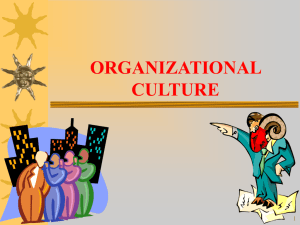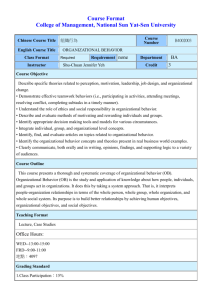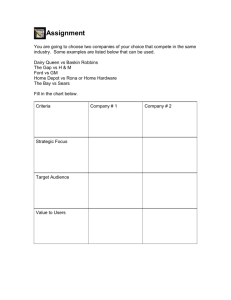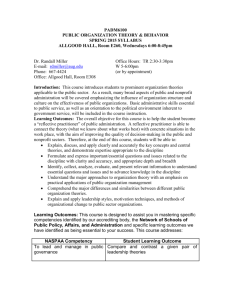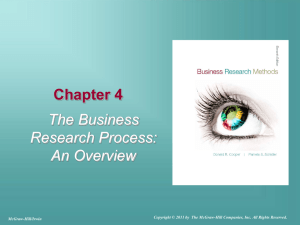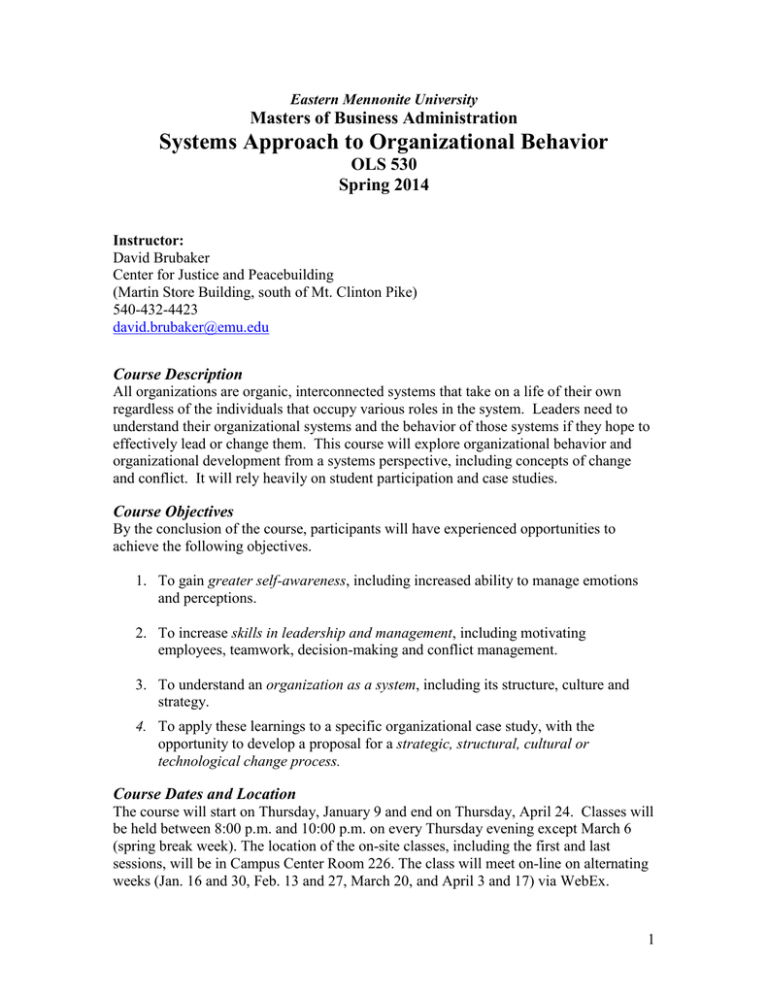
Eastern Mennonite University
Masters of Business Administration
Systems Approach to Organizational Behavior
OLS 530
Spring 2014
Instructor:
David Brubaker
Center for Justice and Peacebuilding
(Martin Store Building, south of Mt. Clinton Pike)
540-432-4423
david.brubaker@emu.edu
Course Description
All organizations are organic, interconnected systems that take on a life of their own
regardless of the individuals that occupy various roles in the system. Leaders need to
understand their organizational systems and the behavior of those systems if they hope to
effectively lead or change them. This course will explore organizational behavior and
organizational development from a systems perspective, including concepts of change
and conflict. It will rely heavily on student participation and case studies.
Course Objectives
By the conclusion of the course, participants will have experienced opportunities to
achieve the following objectives.
1. To gain greater self-awareness, including increased ability to manage emotions
and perceptions.
2. To increase skills in leadership and management, including motivating
employees, teamwork, decision-making and conflict management.
3. To understand an organization as a system, including its structure, culture and
strategy.
4. To apply these learnings to a specific organizational case study, with the
opportunity to develop a proposal for a strategic, structural, cultural or
technological change process.
Course Dates and Location
The course will start on Thursday, January 9 and end on Thursday, April 24. Classes will
be held between 8:00 p.m. and 10:00 p.m. on every Thursday evening except March 6
(spring break week). The location of the on-site classes, including the first and last
sessions, will be in Campus Center Room 226. The class will meet on-line on alternating
weeks (Jan. 16 and 30, Feb. 13 and 27, March 20, and April 3 and 17) via WebEx.
1
Required Texts:
Robbins, Stephen P. and Judge, Timothy R. (2011). Organizational Behavior (14th edition
preferred, 15th accepted). Pearson Prentice Hall.
Osland, Joyce S. and Turner, Marlene E. (2007). The Organizational Behavior Reader
(8th edition preferred, 9th accepted). Pearson Prentice Hall.
Note: Many of the articles in the Osland text will be available on the course Moodle site,
and thus you may not need to purchase this text unless desired for future reference.
Course Requirements (for graduate credit)
1. Overall Participation (10%) and Participation in Moodle Discussion (10%)
Since the success of this course depends to a large degree on the quality of the
interaction within the classroom, regular participation will be expected. I will
expect you to have read the required readings prior to coming to class and to
contribute to class and small group discussion. Also, students will be expected to
contribute to an electronic discussion each week moderated on Moodle.
2. Organizational Reflection Paper (20%)—Due February 13)
This paper will consist of 6-8 pages reflecting on your profile in the GilmoreFraleigh style instrument and the ways that your profile has influenced how
you’ve operated within organizations in the past. You also need to address your
view of diversity in organizations, attitudes and job satisfaction, and emotions and
moods in the workplace. What have you learned about yourself as an
organizational member by reflecting on the course readings and your own past
experiences? How might you apply these learnings in future organizational
settings?
3. OB Observation Paper (20%)—Due March 20)
This assignment requires that you partner with another class member to exchange
visits in each other’s organizations. You will be expected to spend at least 3 to 4
hours “shadowing” your colleague throughout his/her day, and taking notes on
behavior (both individual and corporate) that you observe. Your paper will then
consist of 6-8 pages summarizing your observations from the day and analyzing
the organizational behavior that you observed.
4. Final Paper/Case Study (40%)—Due April 24
Your final paper will be a 15 to 20-page case study and recommendations that
will be prepared by your case study group. The paper will recommend a change
management process for a particular organization through strategic planning,
structure review, culture review, leadership development, technological
adaptation, or some other process. A separate grid will be provided in class that
will guide you in preparing your final paper. In addition, your group will present a
summary of its findings and recommendations to the class on April 24. Individual
grades for the final project may vary depending on peer feedback.
2
Course Schedule
The readings from Robbins and Judge shown in italics need to be completed prior to
class. Questions regarding Osland will be posted on Moodle on a weekly basis.
January 9—Introductions and Course Overview
Participant Introductions
Review Syllabus
Read Robbins & Judge Chapter 1 (“What is Organizational Behavior?”)
January 16—Personality Styles and Values (On-Line)
Distribute the Gilmore-Fraleigh Instrument
Values Clarification Exercise
Read Robbins & Judge Chapter 5 (“Personality and Values”) and Osland, “Mastering
Competing Values” (pp. 75-84).
January 23—Managing Diversity
Ethnic Diversity
Generational Diversity
Read Robbins & Judge Chapter 2 (“Diversity in Organizations) and Osland,
“Generations: Boomers and Echos and Nexters—Oh My!” (pp. 400-411).
January 30—Attitudes, Emotions and Job Satisfaction (On-Line)
Attitudes and Behavior at Work
Managing Emotions and Moods
Read Robbins & Judge Chapters 3 (“Attitudes and Job Satisfaction”) and 4 (“Emotions
and Moods”) and Osland, “The Tyranny of Toxic Managers: (pp.117-128).
February 6—Teamwork
“Groups I’ve Love and Hated”
Teambuilding Exercise
Read Robbins & Judge Chapter 10 (“Understanding Work Teams”) and Osland,
“Leading Teams when the Time is Right” (pp.310-324).
February 13—Motivation (On-Line)
Theories of Motivation
Motivation Practices
Reflection Paper Due
Read Robbins & Judge Chapters 7 (“Motivation Concepts”) and 8 (“Motivation: From
Concepts to Application”) and Osland, “Motivation: A Diagnostic Approach” (pp. 151159).
February 20—Communication
Active Listening Exercise
Read Robbins & Judge Chapter 11 (“Communication”) and Osland, “Mindful
Communication” (pp. 256-268).
3
February 27—Power and Empowerment (On-Line)
Sources of Power and “Power Tableau” Exercises
Read Robbins & Judge Chapter 13 (“Power and Politics”) and Osland, “Influence
without Authority” (pp. 560-569)
March 6—No Class (Spring Break)
March 13—Leadership
Authentic Leadership
“Critique a Leadership Theory”
Read Robbins & Judge Chapter 12 (“Leadership”) and Osland, “Level 5 Leadership”
(pp. 449-465)
March 20—Conflict and Decision-Making (On-Line)
Understanding Conflict in Organizations
Negotiation and Mediation
OB Observation Paper Due
Read Robbins & Judge Chapter 14 (“Conflict and Negotiation”) and Osland, “How
Management Teams Can Have a Good Fight” (pp. 377-385).
March 27—Organizational Structure (Finalize Case Study Groups)
The Organizational Tree
Physical Structure and Social Structure
Read Robbins & Judge Chapter 15 (“Foundation of Organizational Culture”) and
Osland, “The Organization of the Future” (pp. 640-653).
April 3—Organizational Culture (On-Line)
What is Organizational Culture?
Changing Culture
Read Robbins & Judge Chapter 16 (“Organizational Culture”) and Osland,
“Uncovering the Levels of Culture” (pp. 475-481).
April 10—Managing Human Resources
Training and Development
Performance Evaluation
Read Robbins & Judge Chapter 17 (Human Resource Policies and Practices”) and
Osland, “Coaching for Sustained Desired Change” (pp. 593-608).
April 17—Managing Organizational Change (On-Line)
Change Dynamics in Organizations
Leading a Change Process
Read Robbins & Judge Chapter 18 (“Organizational Change and Stress Management”)
and Osland, “The Heart of Change” (pp. 681-693)
April 24—Small Group Presentations (Final Papers Due)
Read Osland, “Managing to be Ethical” (pp. 171-186).
4
Reduced Credit:
Those taking the course for two credit hours must participate fully in class discussion,
including weekly contributions via Moodle. They can then choose to do both the
Reflection Paper and the Observation Paper OR participate in a Case Study Group.
Evaluation, writing guidelines, miscellaneous
Writing will be a factor in evaluation: EMU has recently adopted a set of writing
guidelines for graduate programs that include four sets of criteria: content, structure,
conventions and style (see next page). It is expected that graduates will be able to write
at least a “good” level with 60% writing at an “excellent” level. For the course papers,
please follow the APA style.
In your papers, be sure to avoid any form of plagiarism. If you have doubts about what is
appropriate, a useful website is http://www.indiana.edu/~istd/. See also the EMU
Graduate Catalog http://www.emu.edu/catalog/graduate/general/academics under
“Honesty” for the university policy.
Grades will be based on an accumulation of numerical points that will be converted to a
letter grade at the end of the course. Each assignment will receive a score expressed as a
fraction, with the points received over the total points possible (e.g. 18/20). The
following is the basic scale used for evaluation. Points may be subtracted for missed
deadlines.
95-100 = A outstanding
90-94 = A- excellent
85-89 = B+ very good
80-84 = B good
75-79 = B- satisfactory
70-74 = C passing
Below 70 = F failing
Graduate students are expected to earn A’s and B’s. A GPA of 3.0 is the minimum
requirement for graduation.
If you have received services in the past related to a learning disability or attention deficit
disorder and/or you feel you may have such a problem in this course, please make an
appointment to speak with the faculty member or with the Coordinator of Student
Disability Support Services in the Academic Support Center, Roselawn Ground Floor
(432-4233).
Course extensions and outstanding grades
All papers will be due on the dates shown in the syllabus, unless adjusted by the
instructor. If students are unable to submit a paper by the required date, they can request
an extension from the instructor. A grade penalty will be imposed unless the reason for
the extension relate to a personal or family emergency.
5
Writing Standards – Graduate Level (Grid Version)
A excellent
B competent
C below
expectations
Criteria
Com
ments
Content
(quality of the
information/ideas
and sources/details
used to support
them)
- has clarity of
purpose
- has depth of
content
- displays insight
or originality of
thought
-demonstrates
quality and
breadth of
resources
- has clarity of
purpose
- has substantial
information and
sufficient support
- contains some
originality of
thought
-uses quality
resources
Structure
(logical order or
sequence of the
writing)
- is coherent and
logically
developed
-uses very
effective
transitions
- has virtually no
errors of
conventions
- is coherent and
logically developed
-uses smooth
transitions
Conventions
(appearance of the
writing: sentence
structure, usage,
mechanics,
documentation)
Style
(personality of the
writing: word
choice, sentence
variety, voice,
attention to
audience)
- is concise,
eloquent and
rhetorically
effective
-has nicely varied
sentence structure
-is engaging
throughout and
enjoyable to read
- has clarity of
purpose
-lacks depth of
content and may
depend on
generalities or the
commonplace
- has little
originality of
thought
-uses mostly quality
resources
- is coherent and
logically (but not
fully) developed
-has some awkward
transitions
- has minimal errors - is understandable
of conventions
but has noticeable
problems of
sentence structure,
usage, mechanics or
documentation
- displays concern
- has some
for careful
personality
expression
but lacks
-has some variation imagination and
in sentence
may be stilted and
structure
may rely on clichés
-is generally
-has little variation
enjoyable to read
in sentence
structure
-is not very
interesting to read
Grade
The weighting of each of the four areas is dependent on the specific written
assignment and the teacher’s preference.
6

